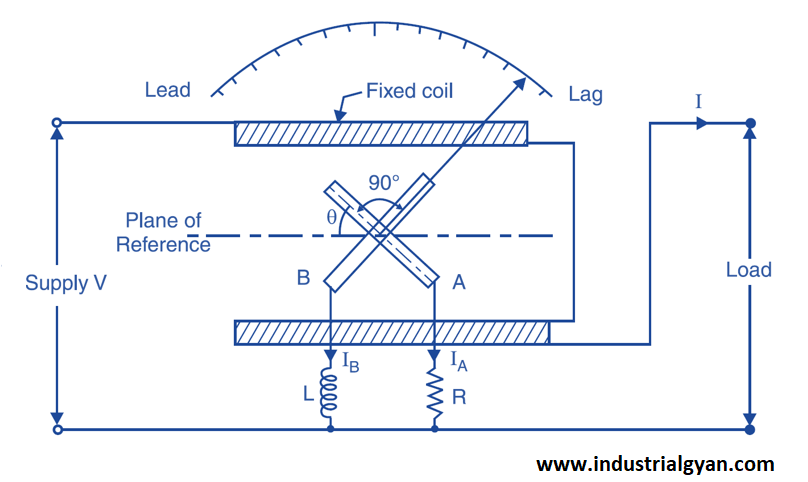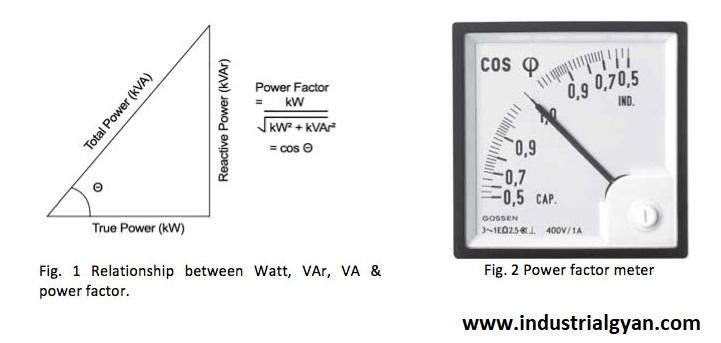Introduction
Power factor is a critical factor in ensuring the efficient operation of electrical systems. A power factor meter serves as a valuable tool in measuring and monitoring power factor levels, enabling users to identify and address potential issues. In this comprehensive guide, we will delve into the world of power factor meters, exploring their purpose, functionalities, and applications. Whether you are an electrical engineer, an industry professional, or a curious individual seeking knowledge about power factor meters, this article will provide you with valuable insights. So, let’s dive in and unravel the mysteries of power factor meters!
Power Factor Meter: Understanding the Basics
A power factor meter is a device designed to measure the power factor of an electrical system. It provides valuable information about how effectively electrical power is being utilized within a given system. By measuring the phase difference between voltage and current waveforms, a power factor meter determines the efficiency of power consumption and highlights any power factor imbalances that may exist.

How Does a Power Factor Meter Work?
A power factor meter operates by utilizing current and voltage sensors. These sensors measure the instantaneous values of current and voltage waveforms, allowing the meter to calculate the power factor. The meter typically displays the power factor as a numeric value or a percentage, providing an accurate representation of the system’s efficiency.
The Importance of Power Factor
Maintaining a balanced power factor is crucial for several reasons. Firstly, a low power factor can result in increased energy consumption and utility costs. It leads to inefficient use of power, causing additional strain on electrical equipment and wasting valuable resources. Secondly, power factor imbalances can lead to decreased system capacity and performance. By monitoring power factor levels, users can optimize their systems, reduce energy consumption, and avoid unnecessary expenses.
Features and Benefits of Power Factor Meters
A power factor meter offers various features and benefits that contribute to efficient power management and enhanced system performance. Let’s explore some of the key features and advantages:
1. Real-time Power Factor Monitoring
Power factor meters provide real-time monitoring of power factor levels, enabling users to quickly identify any deviations or imbalances. With instant access to power factor data, operators can take prompt corrective actions and prevent potential issues.
2. Accurate Measurement
Power factor meters are designed to deliver precise and accurate measurements, ensuring reliable data for analysis. Their advanced sensing technology and high-resolution displays allow for accurate monitoring and troubleshooting of power factor-related problems.

3. Data Logging and Analysis
Many power factor meters offer data logging capabilities, allowing users to store and analyze power factor readings over time. This feature facilitates the identification of trends, patterns, and irregularities, assisting in predictive maintenance and system optimization.
4. Alarm and Alert Systems
Certain power factor meters are equipped with alarm and alert systems that notify users when power factor levels exceed predetermined thresholds. This feature ensures proactive monitoring and helps prevent critical system failures or inefficiencies.
5. Compatibility with Various Systems
Power factor meters are compatible with a wide range of electrical systems, including residential, commercial, and industrial setups. They can be seamlessly integrated into existing infrastructure, making them versatile tools for different applications.
6. User-friendly Interface
Modern power factor meters feature user-friendly interfaces, making them accessible even to non-technical users. Intuitive displays, graphical representations, and easy-to-understand data formats enhance the user experience and simplify the interpretation of power factor measurements.
Common Applications of Power Factor Meters
Power factor meters find application in diverse industries and settings. Let’s explore some common areas where power factor meters play a crucial role:
1. Industrial and Manufacturing Facilities
In industrial and manufacturing environments, air blast circuit breaker,power factor meters are essential tools for optimizing energy consumption. By monitoring power factor levels, these facilities can identify power factor imbalances and take corrective measures to improve energy efficiency. This not only reduces operational costs but also enhances the overall productivity of the facility.
2. Commercial Buildings and Offices
Power factor meters are also beneficial in commercial buildings and offices where large amounts of electrical power are consumed. By monitoring and maintaining a balanced power factor, these establishments can avoid penalties imposed by utility companies for low power factors. Additionally, optimizing power factor levels helps reduce energy waste, leading to significant cost savings in the long run.

3. Renewable Energy Systems
Power factor meters are crucial components in renewable energy systems, such as solar and wind power installations. These meters enable operators to monitor and regulate power factor levels, ensuring efficient energy conversion and transmission. By maintaining optimal power factor levels, renewable energy systems can maximize their output and minimize energy losses.
4. Electrical Testing and Troubleshooting
Power factor meters play a vital role in electrical testing and troubleshooting processes. They help electrical engineers and technicians diagnose power factor-related issues, such as reactive power flow and power factor correction requirements. This information enables them to make informed decisions about system improvements and repairs, leading to enhanced electrical system performance.
5. Power Quality Analysis
Power factor meters are valuable tools in power quality analysis. pin type insulator.They allow users to evaluate the quality of electrical power, including harmonic distortions, voltage fluctuations, and reactive power issues. By analyzing power factor data, experts can identify and rectify power quality problems, ensuring a stable and reliable power supply.
6. Energy Management Systems
Integrating power factor meters into energy management systems provide a comprehensive approach to power monitoring and optimization. These meters contribute valuable data to energy management software, allowing users to track power consumption patterns, identify energy wastage, and implement energy-saving measures. Power factor meters act as a cornerstone for effective energy management strategies.

Frequently Asked Questions (FAQs)
1. What is the purpose of a power factor meter?
A power factor meter is used to measure and monitor the power factor of an electrical system. It helps determine the efficiency of power consumption and identifies any power factor imbalances that may exist.
2. How does a power factor meter work?
A power factor meter works by measuring the phase difference between voltage and current waveforms in an electrical system. It utilizes current and voltage sensors to calculate the power factor, which is displayed as a numeric value or a percentage.
3. Why is the power factor important?
Maintaining a balanced power factor is important because it ensures efficient use of electrical power and reduces energy waste. It also prevents unnecessary strain on electrical equipment and helps avoid increased utility costs.
4. Can power factor meters help reduce energy consumption?
Yes, power factor meters can help reduce energy consumption by identifying power factor imbalances and enabling users to take corrective actions. By optimizing power factor levels, energy waste can be minimized, resulting in significant cost savings.
5. Are power factor meters suitable for different types of electrical systems?
Yes, power factor meters are compatible with various electrical systems, including residential, commercial, and industrial setups. They can be seamlessly integrated into existing infrastructure, making them versatile tools for different applications.
6. What are the benefits of using a power factor meter?
Using a power factor meter offers benefits such as real-time power factor monitoring, accurate measurements, data logging and analysis capabilities, alarm and alert systems, compatibility with various systems, and a user-friendly interface. These benefits contribute to efficient power management, improved system performance, and cost savings.
Conclusion
In conclusion, a power factor meter is a valuable tool for monitoring and optimizing electrical systems. By measuring power factor levels, it provides insights into the efficiency of power consumption and helps identify potential issues. Whether in industrial facilities, commercial buildings, renewable energy systems, or for power quality analysis.
You can follow us on LinkedIn

I am a highly motivated and skilled individual with a passion for Electrical engineering. I have 1 year of experience in Robotics and Electrical engineering, which has allowed me to develop a strong set of skills in PLC, Painting Robots, SCADA. I am a quick learner and am always looking for new challenges and opportunities to expand my knowledge and skills. I am a team player and enjoy working with others to achieve a common goal. Successfully completed many projects for a various clients in the automobile sector.
Thank You

